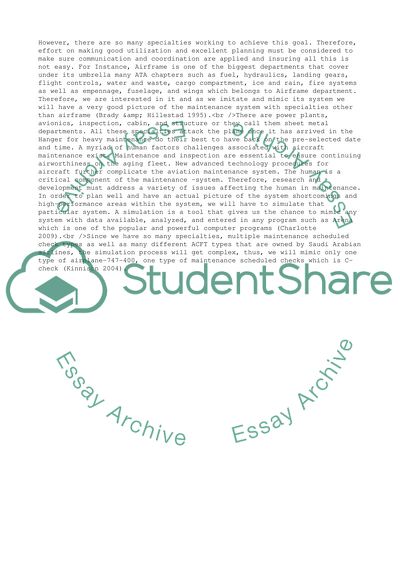Cite this document
(Building Simulation Model by Arena to Optimize Airplane C3 Check Coursework Example | Topics and Well Written Essays - 2500 words - 1, n.d.)
Building Simulation Model by Arena to Optimize Airplane C3 Check Coursework Example | Topics and Well Written Essays - 2500 words - 1. https://studentshare.org/management/1801782-building-smulation-model-by-arena-to-ptimize-airplane-c3-check-manitenance
Building Simulation Model by Arena to Optimize Airplane C3 Check Coursework Example | Topics and Well Written Essays - 2500 words - 1. https://studentshare.org/management/1801782-building-smulation-model-by-arena-to-ptimize-airplane-c3-check-manitenance
(Building Simulation Model by Arena to Optimize Airplane C3 Check Coursework Example | Topics and Well Written Essays - 2500 Words - 1)
Building Simulation Model by Arena to Optimize Airplane C3 Check Coursework Example | Topics and Well Written Essays - 2500 Words - 1. https://studentshare.org/management/1801782-building-smulation-model-by-arena-to-ptimize-airplane-c3-check-manitenance.
Building Simulation Model by Arena to Optimize Airplane C3 Check Coursework Example | Topics and Well Written Essays - 2500 Words - 1. https://studentshare.org/management/1801782-building-smulation-model-by-arena-to-ptimize-airplane-c3-check-manitenance.
“Building Simulation Model by Arena to Optimize Airplane C3 Check Coursework Example | Topics and Well Written Essays - 2500 Words - 1”. https://studentshare.org/management/1801782-building-smulation-model-by-arena-to-ptimize-airplane-c3-check-manitenance.


